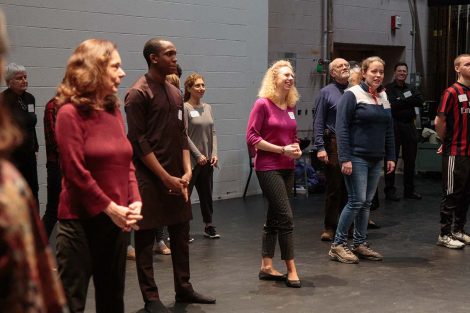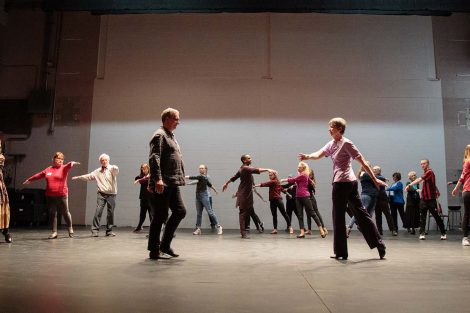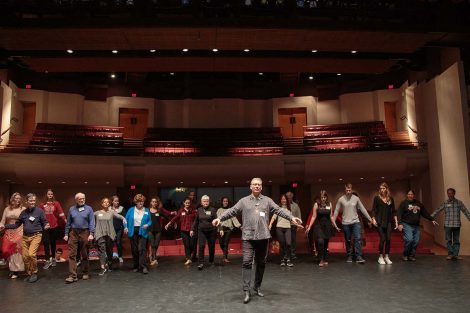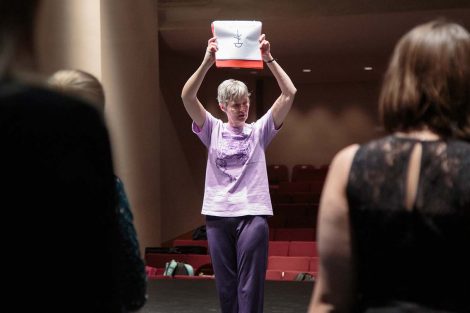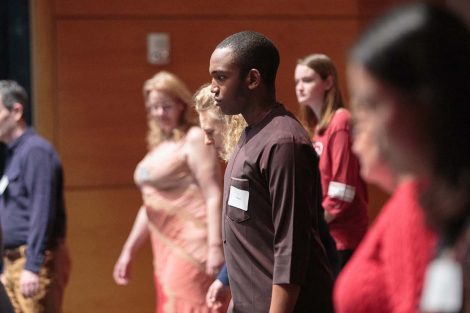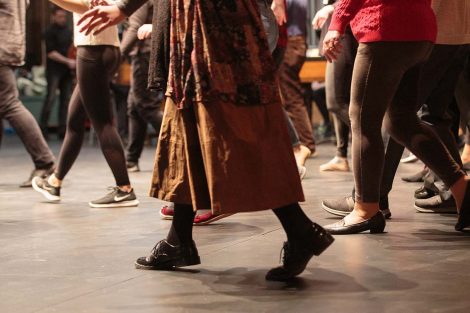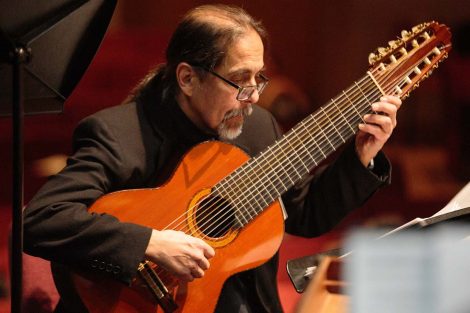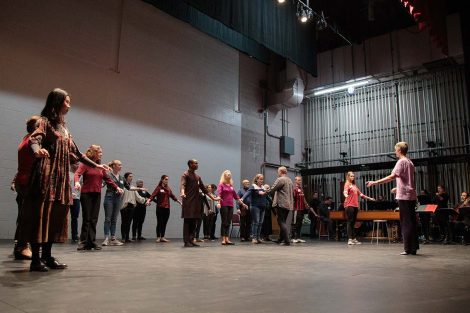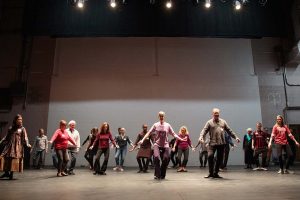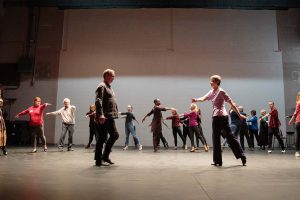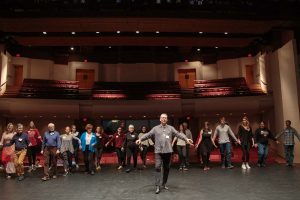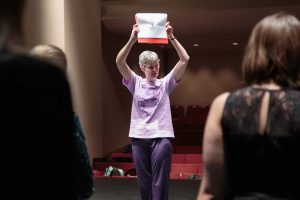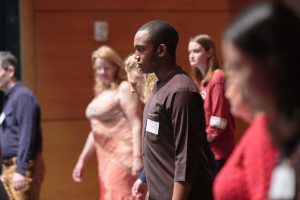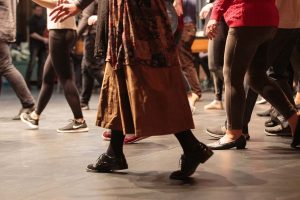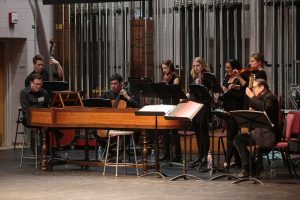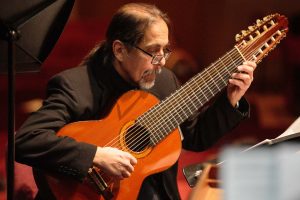Notice of Online Archive
This page is no longer being updated and remains online for informational and historical purposes only. The information is accurate as of the last page update.
For questions about page contents, contact the Communications Division .
About 30 people learned how to dance in the Baroque style of the 17th and 18th centuries in Europe
Photos by Kevin Vogrin
Participants of the Feb. 22 workshop learned dances such as the bourée, gigue, saraband, minuet, chaconne, and others. The workshop was led by Dr. Dorothy Olsson and Kaspar D. Mainz of the New York Historical Dance Company. Dance played a prominent role in European courts of the Baroque period, both in social and theatrical settings. Kaspar Mainz is an expert in the reconstruction of early dances. “It’s an art,” says Olga Anna Duhl, Oliver Edwin Williams Professor of Languages and organizer of the event. “It’s like reading a foreign language. The steps are very difficult to decipher.” Few notations or instructions for performing the steps to 17th and 18th century dances have survived in written form. The first comprehensive treatise that includes a notation system specific to dance dates from the late 16th century. The artistry of the dance notations was mind blowing, says Sayeed Malami ’20, a computer science and government and law double major, and philosophy minor. “It looks like a painting or a drawing. The intersection of the arts has no limits.” The early dances are from the Italian, French, and English courts, followed by the Spanish, German, and other cultural centers. The College’s Marquis Consort, a student ensemble that plays music from before 1750, performed 18 songs from the Baroque and Renaissance periods during the three-hour workshop. Jorge Torres, professor of music, is conductor of the 12-member consort. Having live music made all the difference, says Duhl. “Dorothy and Kaspar were thrilled. Normally when they hold a workshop they have to bring their own tapes.” The workshop was presented by the Medieval, Renaissance, and Early Modern Studies Program; the Department of Foreign Languages and Literatures; the Department of Music; and the Williams Center for the Arts.
